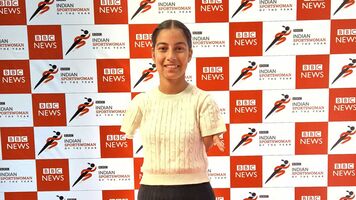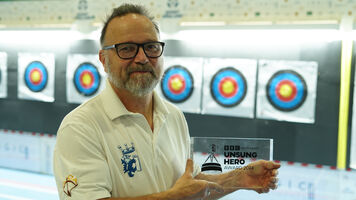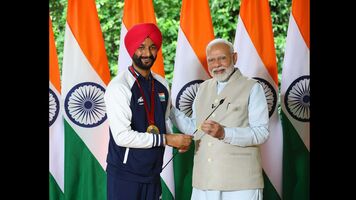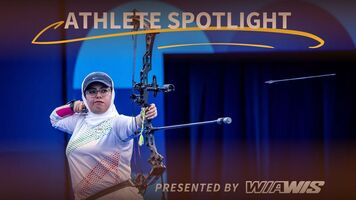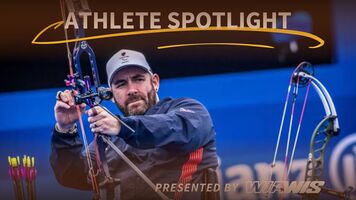Finding the right balance: Para archers and the challenge of impairment
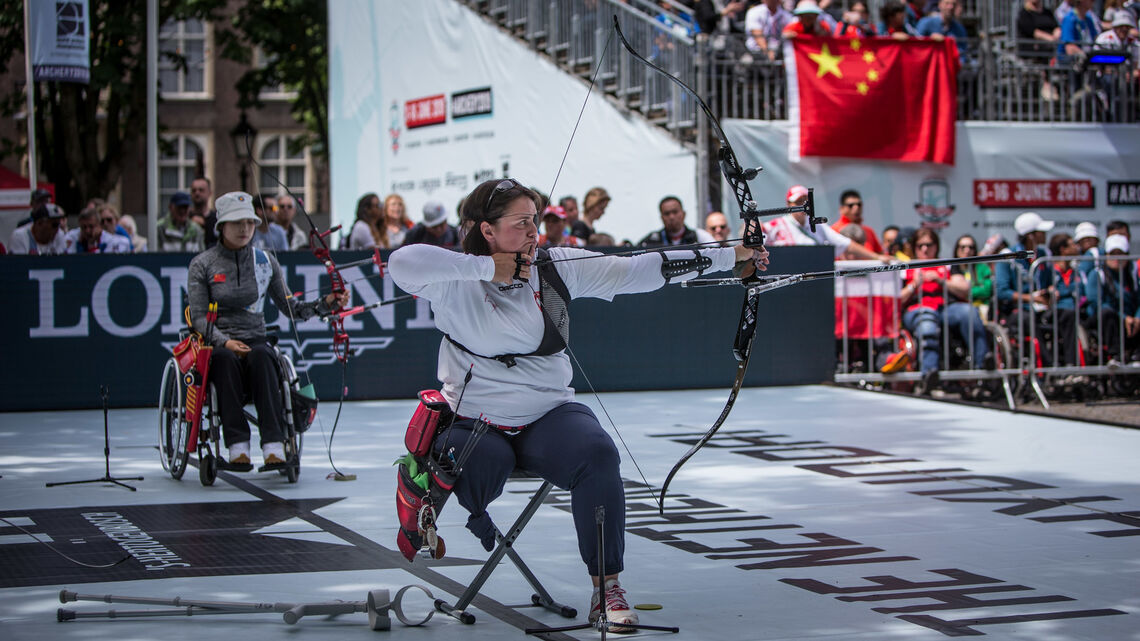
Kyle Tremblay is a Canadian para archer who shoots in the compound men’s open category. He’s in a wheelchair after a spinal injury.
“Balance is incredibly important,” he says. “Everything in our sport comes down to precision. With my injury, I’m basically waist-down paralysed so I have to stabilise myself using my core.”
Kyle has a T12 fracture – a breakage in one of the vertebrae in his spine around the bottom of his ribcage.
“It involves a lot of weight training and resistance training. And just overall shooting, getting used to your body weight and balance with your bow,” he explains.
Excellence in the sport of archery is rooted in finding a smooth, repetitive technique that allows an archer to deliver precise and consistent results. Much of that requires balancing the forces that are acting on the body, both from the bow and the surrounding environment.
A para archer’s impairment often makes controlling the body and therefore balance more difficult. Athletes have to learn to compensate for a lack of feeling or mobility.
"When the weather gets bad and you have big wind, your bow is blowing around, your back is pushing forward, and your abdominals, as well. Any extra weight you have to take away by using any mobility you have in your legs or your hips and trying to help them pull you back or down,” says Kyle.
“I use pretty heavy equipment, so I definitely gained enough muscles to hold my bow fairly upright. I think it’s something you can train, the matter of injury, just have to figure it out.”
Kyle has a little mobility in his hips to help with his body placement. But the majority of his weight goes straight down into his chair – which, as an inanimate object, does not have the same stabilisation ability as a person’s legs.
Some para archers, like Australia’s Jonathon Milne, can use the feeling they do have in their feet to brace themselves a little in their wheelchairs.
But others, like Emma Rose Ravish of the USA, can’t. The 19-year-old doesn’t have legs – but learned to balance her body differently through horse therapy as a child.

“We’ve actually just figured it out with the bow,” she says. “I have a pretty good understanding of my balance and I just have to make sure that I’m equal on both sides, with the bow as well.”
Emma Rose puts her wheelchair a little behind the shooting line. It helps her find her shooting rhythm.
Para archers are assessed by classifiers to determine which competition category they fall into at tournaments and which assistive devices they can use when competing.
Points are assigned for impairments to determine the overall level of mobility.
“It’s difficult to test the balance,” says Chiara Barbi, a classifier at the World Archery Para Championships in 2019. “In my opinion, what really makes the difference is the abdominals.”
“Even without legs, you can have good core balance. The torso is the most important for wheelchair archers. Without abdominals, it’s really difficult to shoot and that’s why some use assistive devices to be stable in the wheelchair.“
Czech para athlete David Drahoninsky is one such para archer. He competes in the W1 category, for athletes with the highest level of impairment, and has straps around his body to keep him stable in his chair.
He’s permitted to use them under his classification because he simply does not have the abdominal strength required to balance. It makes what he can achieve with a bow all the more impressive.
Those archers who do have mobility or feeling in their torsos put a lot of focus on it in training.
“I do a lot of exercises to get the core strength, a lot of gym workout,” says Australia’s Craig McMurdo. “I basically use my abdominals. I switch them on, keep them switched on to keep myself straight and upright, to have posture in the right position.”
There’s a rule in para archery that defines the maximum height the backrest of a wheelchair can be. It’s about making the playing field level, not giving any single archer an advantage.

“I can feel a lot from my backrest. I can feel whether I’m off balance and, with my core, whether I’m leaning back or coming forward,” says Craig.
It’s difficult to understand the challenge of shooting from a wheelchair when the majority of archers are used to standing. The closest you can easily come to the feeling is by sitting in a chair and lifting your feet off the ground.
“It’s a lot tricker just to get the right feel of the good place [for your body],” says Craig. “But once you get it, it’s nice and easy.”
Balance is equally vital for visually impaired athletes. Competitors of all visual impairment must wear blindfolds to ensure that they cannot see the target at all – again, to level the field. It also puts a greater emphasis on feeling.
Archers must balance their technique with the need to aim by contacting a tactile sight with their bow hand. They also use markers in the ground to place their feet.
“Once you work out [your technique], you have steps that you are comfortable with, then you get the balance,” says Australian coach Ros Greig.
“But with visually impaired, we use this plate to say, that’s where the left foot has to be and that’s where the right foot has to be so my body goes at 90 degrees to the target. The arm goes up, you should find your tactile and it has to be consistent.”
The tactile sight that visually impaired archers use to aim, on the back of their hands, is the only conscious contact with the outside world.
Obviously, they don’t look at the target. And without that optical distraction, visually impaired archers have a far greater focus on feel. Winning and losing comes purely down to technique and finding the perfect balance.
And in that way, it might just be one of the purest forms of the sport.







